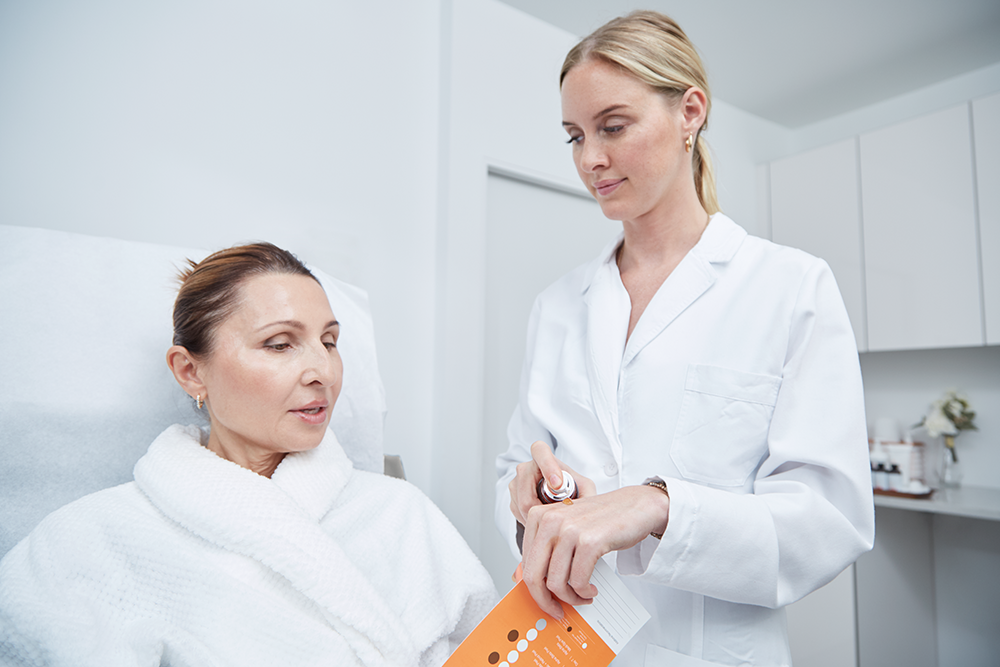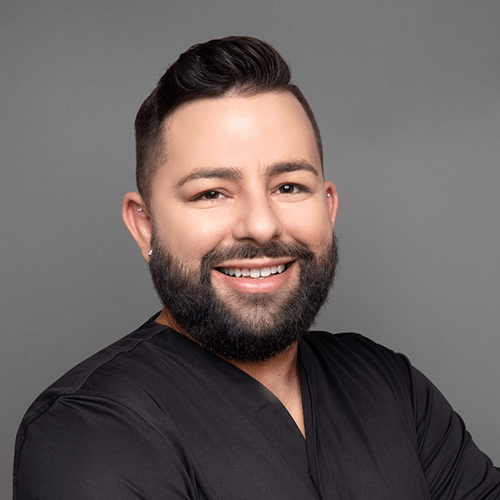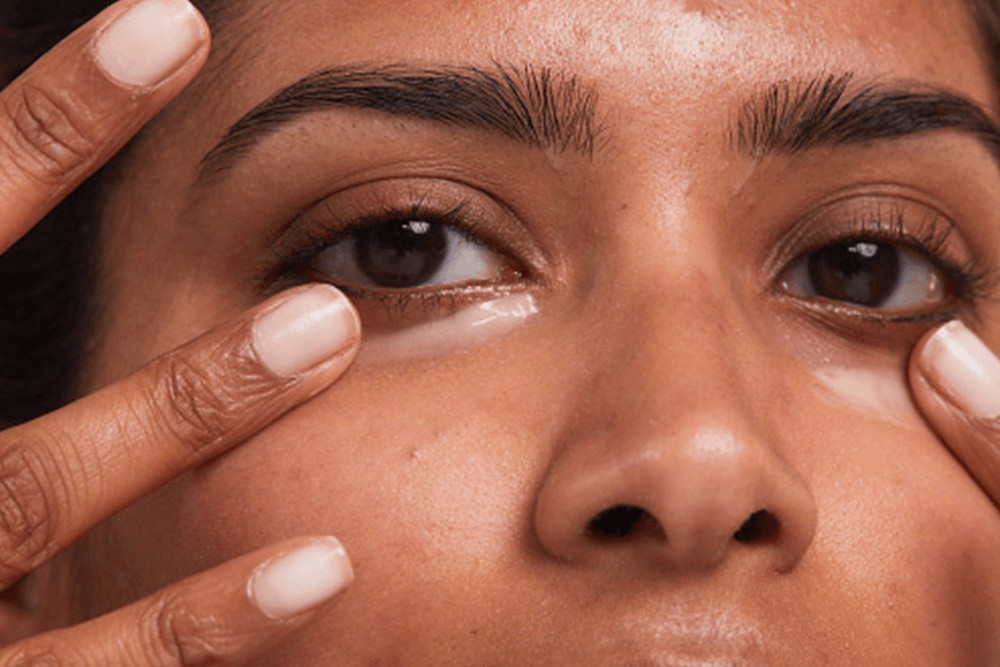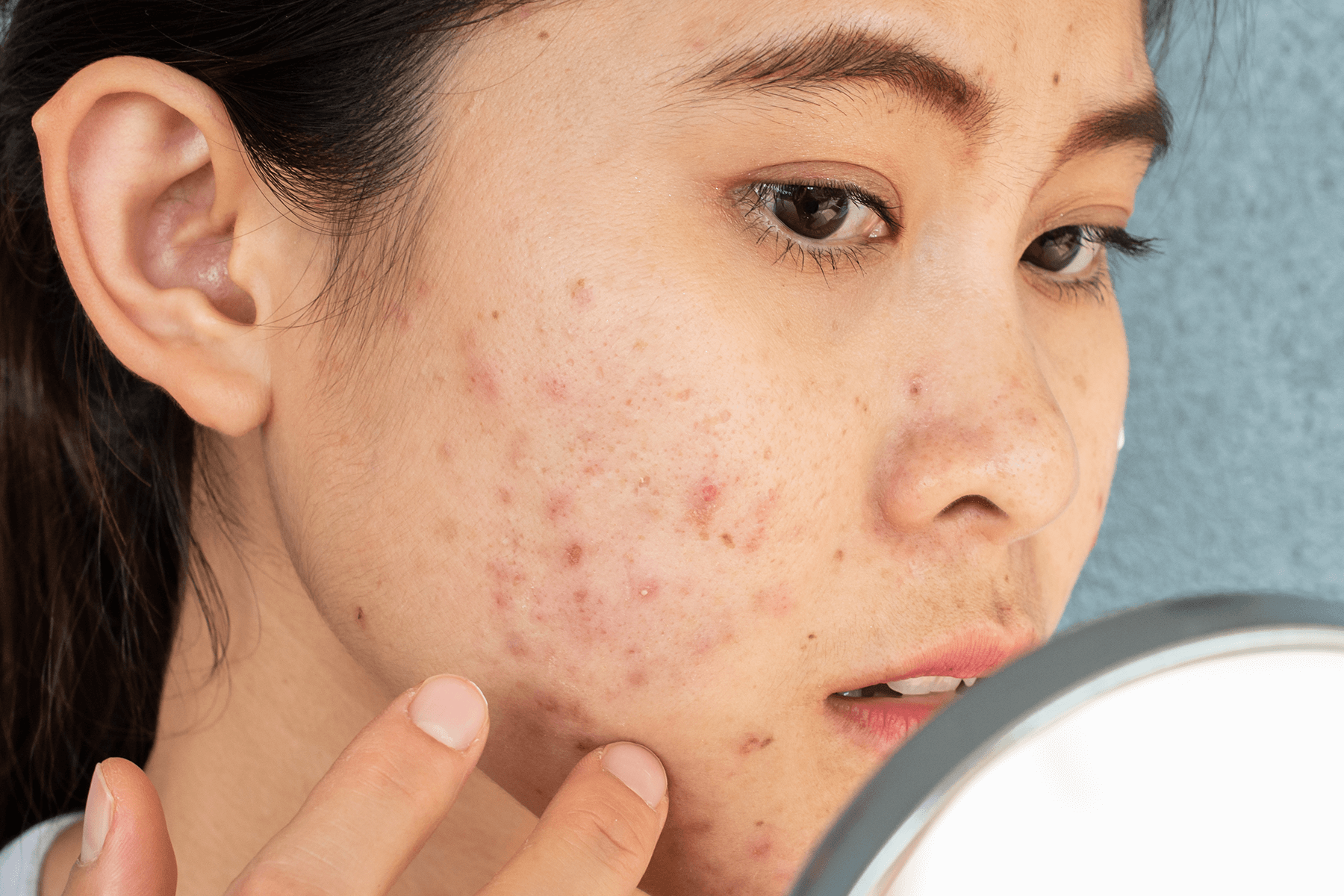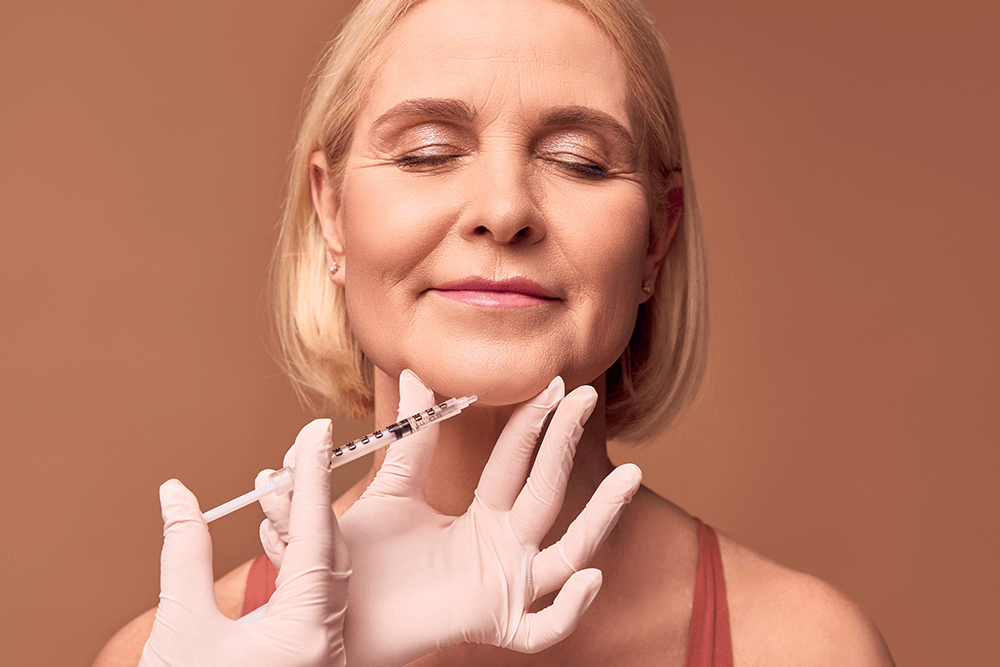The+Source
“Baby Botox” is a term that gets thrown around a lot these days. Wondering what all the hype is about? Wanting to educate yourself before booking your dermatologist consult? (For example, did you know that Baby Botox doesn’t always involve literal Botox? And it’s definitely not for infants.) You’ve come to the right place.
What is Botox? A refresher
Botox is the brand name of an injectable strain of botulinum toxin type A (onabotulinumtoxinA) manufactured by Allergan known as a neuromodulator. It’s FDA approved to treat moderate to severe frown and forehead lines, as well as crow’s feet. (It also has the FDA OK to treat chronic migraines, axillary hyperhidrosis, and more conditions completely unrelated to how your face looks.) When injected into facial muscles, Botox temporarily relaxes those fibers, softening the appearance of glabellar lines (aka “the elevens,” glabellar lines are the vertical ones between the eyebrows) or of an always-furrowed brow. Depending on the area being treated and the severity of the wrinkles, these effects can last anywhere from three to six months.
The word Botox itself has become a catchall term for any neuromodulator, of which there are several, like Dysport (abobotulinumtoxinA), Jeuveau (prabotulinumtoxinA), and Xeomin (incobotulinumtoxinA). All function in essentially the same manner as Botox and deciding which one is right for you and your specific treatment goals is a conversation you’ll want to have with your dermatologist.
So, What is Baby Botox?
Baby Botox isn’t as strong as its big sibling. A typical Baby Botox treatment uses slightly more than half the number of neuromodulator units that a regular Botox session does. Less neuromodulator means the injected muscles don’t freeze in place, they just smooth out a bit. Your face retains the same freedom of movement, but fine lines seem to fade away and your overall complexion can appear much brighter.
Originally, the purpose of Botox (or any neuromodulator used for cosmetic reasons in the face) was to restrict certain muscle movements, whether it was the contraction causing your crow’s feet or the tightness pulling your eyebrows into a permanent look of frustration. The longer a person had been making these expressions, the deeper the lines would be, and the more neuromodulator would be required to soften their appearance. (Of course, some inexperienced injectors went overboard, inserting so much neuromodulator into an area that the muscles became temporarily frozen, resulting in an epidemic of smooth, motionless “ice-block foreheads.”)
The flip side to using less of a neuromodulator than its standard dose is that results usually don’t last as long — typically two months, three months tops. Baby Botox is the sort of treatment that’s suited for someone who’s just beginning to see the emergence of wrinkles when their face is at rest.
While full-strength neuromodulators can be used throughout the body, baby doses are just for the neck up.
How to prepare for a Baby Botox treatment
In the end, Botox is Botox, no matter how strong a dose you’re getting. So you should prep for your Baby Botox appointment the same way you would for a traditional Botox touchup. Since injections can sometimes lead to bruising, it’s wise to lay off non-essential blood thinning medications or supplements, such as aspirin, NSAIDs, and fish oil, in the five or six days before your appointment. Drinking alcohol the day prior is also not recommended. Otherwise, you should be good to go.
What should you expect during a Baby Botox treatment?
A Baby Botox injection is just like a regular Botox injection, just with less neuromodulator used at each injection site and potentially fewer injection sites overall. The shots themselves are fairly painless, and it usually takes three to five days for their effects to fully kick in.
As previously noted, Baby Botox can be performed with any number of FDA-approved neuromodulators. Determining which one is right for you is a conversation you’ll need to have with your dermatologist where you discuss your treatment goals. (Yet another reason to book your appointment with a reputable doctor.) For example, Botox typically stays exactly in the spot where it’s injected. Dysport, on the other hand, tends to spread slightly (think of the ripples on a lake after you toss a pebble into still water). If a person’s wrinkles are quite long, they may benefit from Dysport’s diffusion. Your dermatologist is an expert on all approved neuromodulators and knows the pros and cons of each one. During your consultation, they’ll discuss these with you, so that together you can select the best option for your treatment.
What are the potential side effects of a Baby Botox treatment?
Slight bruising is unlikely but does happen. When that’s the case, it can last up to a week. Temporary swelling is also possible, but it goes away quickly. Beyond the normal caveats that neuromodulators are drugs and reactions can occur, the only other major side effect has to do with the skill of your injector. A droopy eyelid or brow can be the result of incorrect placement of the neuromodulator. That’s on the person administering the shots. (So book your appointment with someone you trust, OK?) Thankfully, those effects aren’t permanent and will disappear as the neuromodulator wears off.
What’s the average cost of a Baby Botox treatment?
The cost of your Baby Botox treatment will vary, based on your location, the skill of your practitioner, and the neuromodulator that’s injected. However, in general, you can expect to pay anywhere from $250 to $1000 for your session.
What’s the aftercare routine for a Baby Botox treatment?
If you’re considering Baby Botox, then you’re likely the type of person who favors a preventative regimen now over a reparative one down the road. In that case, you need three key items in your daily routine:
Sunscreen
Daily application of a mineral SPF 30 lotion, like our Dr. Dennis Gross All-Physical Lightweight Wrinkle Defense Broad Spectrum Sunscreen SPF 30, will help block the UV rays that break down collagen fibers and make fine lines and wrinkles that much more apparent (and have you booking that Baby Botox appointment in the first place).
Vitamin C serum
What your sunscreen doesn’t block, vitamin C can help neutralize, thanks to its antioxidant powers. The wonder ingredient also helps stimulate collagen production, for even more lifting and smoothing. Our ultra-potent Dr. Dennis Gross Vitamin C Lactic 15% Vitamin C Firm & Bright Serum has one of the highest concentrations of vitamin C on the market.
Red LEDs
Red light-emitting diodes (LEDs) have been shown to boost collagen levels, when used consistently. Our Dr. Dennis Gross DRx SpectraLite FaceWare Pro is studded with 100 red LEDs, is easy to wear, and only needs to be used a mere three minutes a day to produce visible results in just weeks.
Discover Dr. Dennis Gross Skincare for All Your Skincare Needs
For more skincare tips from the experts at Dr. Dennis Gross, check out our blog’s newest content today. Shop the collection of Dr. Dennis Gross bestselling skincare by dermatologists.
